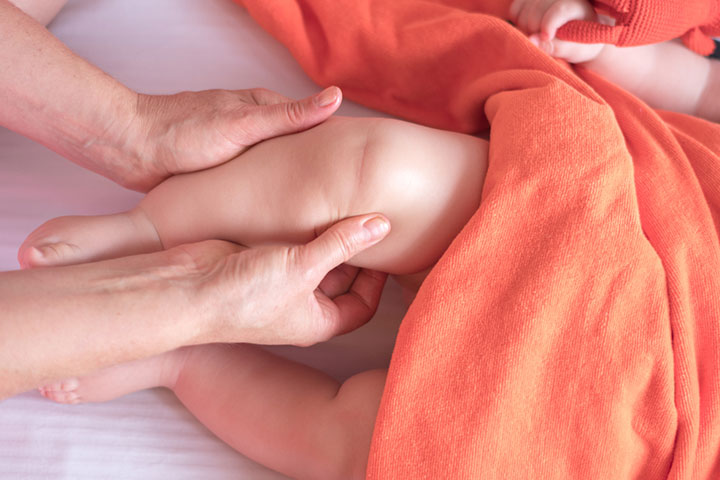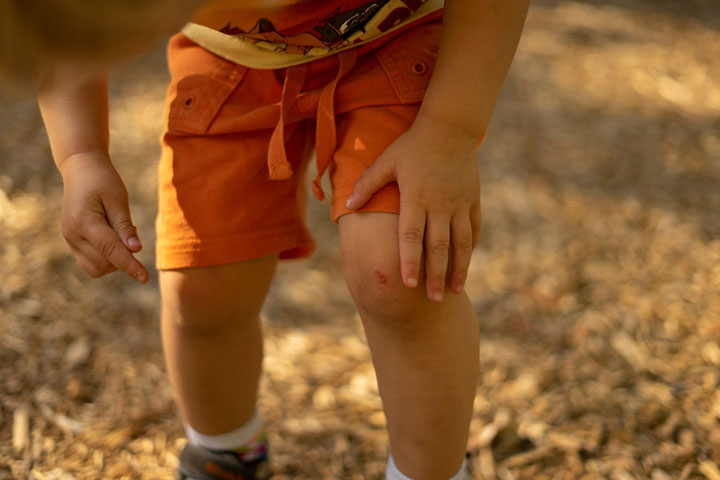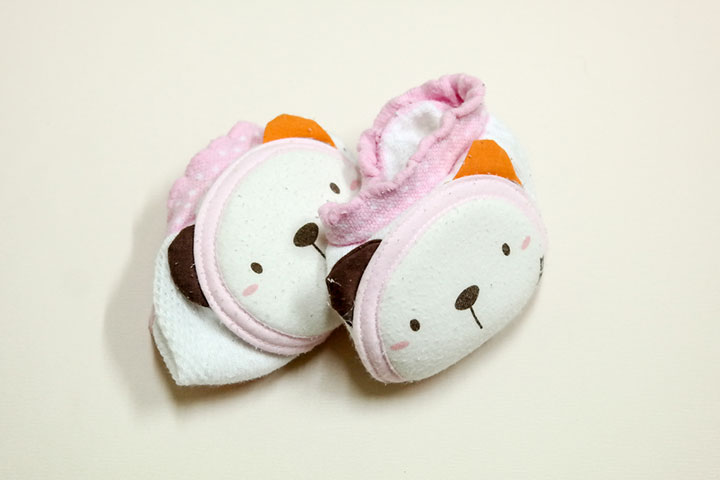One of the several questions new parents ask is “do babies have kneecaps?” or “are babies born with kneecaps?’’ According to Dr. Edward Gotlied, a pediatric specialist in the Stone Mountain area, Georgia, newborns have kneecaps (patella). However, they are made of a soft, rubbery material called cartilage that eventually mineralizes to a bony joint. The cartilaginous kneecaps usually form in the fourth month of fetal life (1). However, they don’t show on x-rays as they are not radio-opaque.
Keep reading to know what cartilaginous kneecaps are, what function they serve, when they turn bony and what issues may occur during this process, and some tips to help strengthen a baby’s kneecaps.
Why Don’t Babies Have Kneecaps?
A newborn has more bones than an adult due to the presence of more flexible cartilage in the body. As the baby grows, some of the cartilage hardens and turns to bone, and some bones fuse together (2).
Babies have cartilage in place of bones during birth to benefit both the mother and the baby. Bones are more rigid and harder than cartilage. Cartilage keeps the baby flexible, so it can easily pass through the birth canal. So, if a newborn has bone kneecaps, they might break during birth or injure the birth canal at the time of delivery.
Also, as cartilage is softer and more flexible than bones, it helps the baby be more flexible while exploring and finding their way in the world by crawling or walking.
At What Age Does The Kneecap Turn Into A Bone?
You might also be wondering when do babies get kneecaps? According to Dr. Eric W. Edmonds of the Rady Children’s Hospital, the cartilaginous patella starts to ossify (turn into bone) between the ages of two and six years. Various parts of cartilage gradually harden to form a bone, and multiple sections of the bone fuse to form the kneecap (3)
The ossification of cartilage is a slow process and might continue until puberty. The underside of the patella continues to have a layer of cartilage, which works as a cushion for the bones. So in case of any injury or pressure on the knee, it can bear the pressure. It also helps them withstand compression due to weight and prevent friction with the adjacent bones (4) (5).
Sometimes, during the process of kneecap formation, some children might develop problems or experience injuries due to the complexity of the patella’s structure and the amount of load it bears.
Possible Complications During The Kneecap Development
It is important to observe your baby’s limbs during the kneecap development process so you understand better about when do babies develop kneecaps. There is a chance for them to develop one or more of the problems mentioned below.
- Bipartite patella: It means patella with two parts. It is a condition wherein the bone centers within the cartilage do not fuse, leading to a two-part kneecap. It is usually asymptomatic and might get carried to adolescence. However, babies might occasionally experience pain when subjected to direct trauma, overuse, or strenuous activity.
The condition can be managed by restricting strenuous activities, administering nonsteroidal anti-inflammatory drugs, etc. If these fail to relieve the pain, surgery might be required (6).
- Congenital dislocation of the patella: It manifests immediately after birth and may cause permanent dislocation of the kneecap. The symptoms include a bend in the joints that cannot be straightened, knock knees, external tibial torsion, and foot deformity.
When detected early on, this condition can be treated with surgery(7).
The following complications are mostly found in children and teens and are rarely encountered in babies and toddlers.
- Osgood-Schlatter disease: This condition is more common in adolescents than in babies, with a lifetime incidence of 13%, according to a study published in the Clinical Journal of Sport Medicine. It usually shows up during the growth spurts when the bones, muscles, and tendons change rapidly. Children who participate in athletics and sports are at a higher risk of developing this condition. It is a temporary condition and rarely requires surgery.
The area below the knee where the tendon from the kneecap attaches to the tibia becomes inflamed, causing knee pain and swelling. The doctor may recommend rest, over-the-counter medications to relieve pain, icing, and stretching exercises (8).
- Injuries: Sometimes, due to excess stress or overuse of the joint, children might experience pain in the knees. This could be due to the wear and tear of the tendons and ligaments associated with the kneecaps.
- Torn meniscus: The meniscus is a C-shaped piece of rubbery cartilage between the tibia and the thigh bone. When children are subjected to rigorous physical activities, or trauma it might result in a torn meniscus. The symptoms include a popping sensation in the knee, stiffness, swelling, pain while rotating the knee, and tenderness of the knee joint.
It can be managed by using crutches to restrict the joint’s movement, exercising to strengthen the muscle around the knee, and wearing special shoe inserts to distribute the weight uniformly while walking, so that there is no excessive pressure (9)
Kneecaps help your baby learn to crawl or walk. Read the next section to understand how to take care of your baby’s kneecaps.
How To Care For Your Baby’s Kneecaps?
Here are some easy ways to strengthen your baby’s kneecaps and protect them from injuries.
- Anecdotal evidence suggests that regular massage of the knees with olive oil or coconut oil might strengthen the kneecaps.
- You can also try a few stretching exercises, such as bending the knee in and out and moving the legs up and down. These also help in strengthening the knees.
- The cartilage inside the knees provides a cushiony effect while the baby tries to crawl on hard surfaces. It might look painful to us, but it is not the case for babies. However, if your baby tends to crawl on hard surfaces often, you can provide them with knee protectors to prevent bruising.
If you are wondering whether babies have kneecaps, the answer is yes. Kneecaps are made of cartilage that turns into bone between ages two and six. However, ossification is a slow process and may take several years to complete. You can protect and strengthen your baby’s kneecaps by massaging their knee regularly with olive oil or coconut oil. You can also try different stretching exercises to strengthen your baby’s knees. In addition, include plenty of calcium and nutrient-rich food in your baby’s diet to help develop healthy and strong bones.
Key Pointers
- Kneecaps in babies initially appear like soft muscles that eventually develop into bony joints.
- The presence of muscles in place of bones makes the birth process easier as the baby’s body parts are flexible.
- Bipartite patella or congenital dislocation of the patella are possible complications in babies.
- Stretching exercises, using knee protectors, and other tips to care for your baby’s kneecaps are given below.
Have you ever wondered if babies have kneecaps? Find out in this informative video! Learn about the development of baby’s bones and how kneecaps form.















